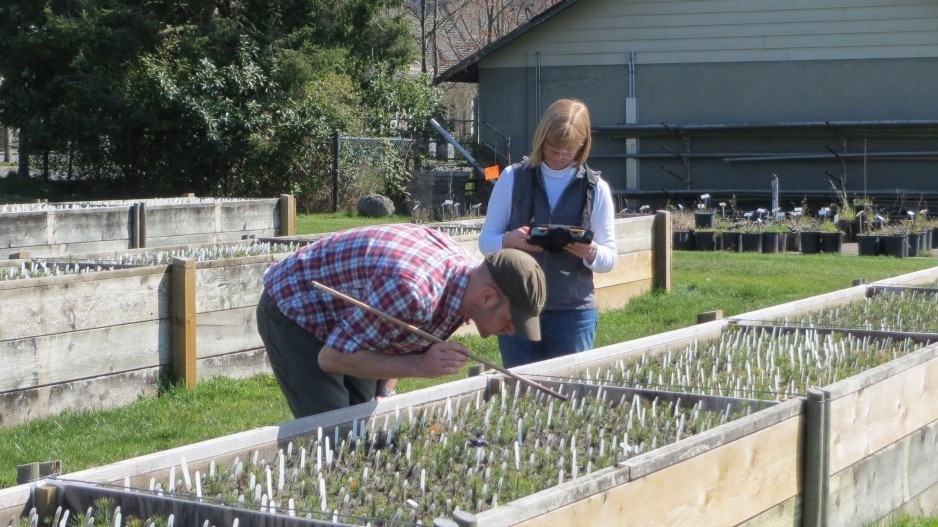As the northern hemisphere experiences earlier, hotter, drier summers and heavier precipitation in the winters, due to global warming, natural selection should eventually result in trees naturally adapting to changing climatic conditions.
Tree varieties that thrive in warmer, drier southern parts of the province, or on lower slopes, are likely to gradually shift further north and further up mountain slopes.
Scientists and foresters in B.C. are already beginning to give them a gentle nudge through assisted migration – one of the topics this morning at the University of British Columbia’s ongoing three-day Commonwealth Forestry Conference.
Using a variety of scientific tools and experiments, like genomics and provenance trials, scientists have already been able to identify which tree varieties have naturally evolved certain traits, like cold hardiness, disease resistance and drought tolerance, in different geographic regions.
Climate data can be matched with tree phenotype data to identify which trees will be best suited to climate conditions in the coming decades. Genomics is an additional tool that helps scientists identify key genetic characteristics.
These tools are used to develop seed lots that foresters can use to replant trees in a given area that are the same species, but different varieties that have traits that make them more suitable to a climate that is changing rapidly.
Interior varieties of Douglas fir, for example, are more cold hardy than coastal varieties. And Sitka spruce from California grow longer and bigger than ones that grow in Alaska. They are the same species of tree, but are different varieties that have naturally adapted to their particular environments.
Scientists and foresters are already using these tools to identify which varieties might fare better in certain areas, and use them in what is called “assisted migration” using a climate-based seed transfer program.
To date, the climate based seed transfer program in B.C. has been optional, but will become mandatory next year, said Sally Aitken, a forestry scientist at UBC’s department of forest and conservation science.
She suggested some early results of this experiment may already be available later this year. This summer’s drought may reveal how trees planted recently using the seed transfer program fare, compared with trees replanted using traditional local seed varieties.
“This year, foresters are expecting a lot of drought related mortality of regeneration, so it would be very interesting to see whether or not the (climate-based seed transfer) stands do any better than the local seed,” Aitken said.
When forests that have been harvested are replanted, foresters have typically used seeds from the trees that grew there naturally. But the climate is changing so quickly, those local varieties planted today may not be suitable for the climate 30 years from now.
“If we are planting trees, we should be planting trees that are adapted to current and near-future climates, rather than only using local seed that’s adapted to past local climates,” Aitken said.
“If we reforest with local populations… we are no longer matching tree genetics with local climates. We expect to be losing area, losing populations, that are experiencing conditions that they are no longer adapted to, such as droughts.”
But assisted migration is a delicate balancing act. Forestry scientists are recommending that only one-quarter to one-third of rotations should be targeted for assisted migration.
“If we move trees too far, too fast from warmer to colder environments, we risk cold injury,” Aitken said. “If we don’t move them at all, of course, we risk maladaptation for other reasons.”
Aitken said assisted migration will need to focus not just on specific trees of value to the forest sector, but other species as well to preserve ecological diversity.
“While this work is looking at climate adaptation within individual species, that needs to be combined into a framework that embraces diversity at the genetic and at the species level wherever possible."




